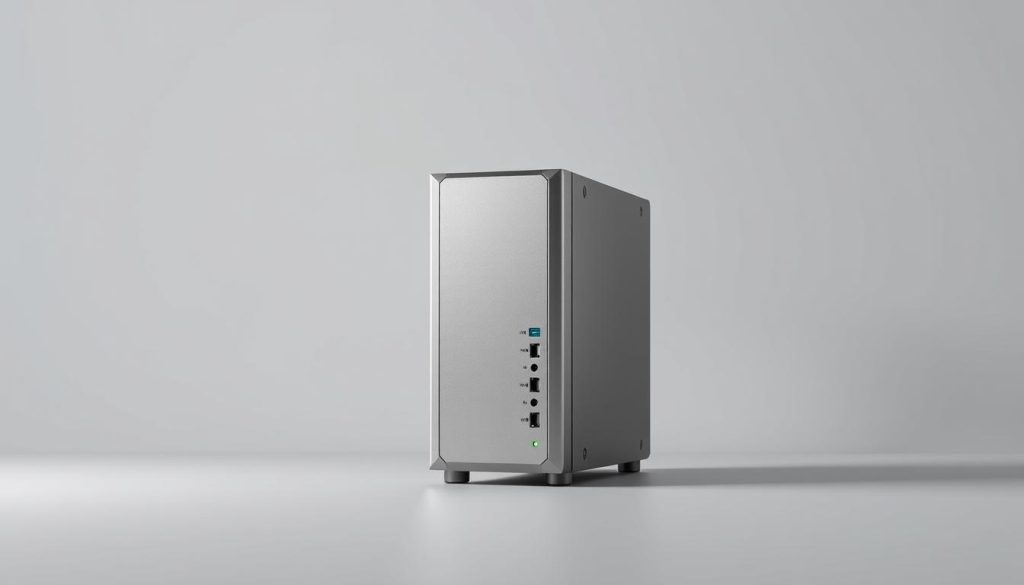FTC disclaimer: This post contains affiliate links and I will be compensated if you make a purchase after clicking on my link.
Did you know that over 90% of all web traffic passes through some form of intermediary server? This staggering statistic reveals how essential these tools have become for modern internet usage. Whether you’re browsing anonymously or gathering business intelligence, understanding these intermediaries is crucial.
A proxy server acts as a middleman between your device and the internet. It intercepts your requests and forwards them while keeping your real IP address hidden. This simple process provides significant benefits for your online activities.
By standing between you and web servers, these tools enhance your privacy and add an extra layer of security. They also help you access restricted content and control how your organization uses the internet. The right configuration can even optimize performance through caching.
This comprehensive guide breaks down the major classifications into seven key categories. You’ll learn about traffic flow direction, anonymity levels, IP address location, and protocol support. We’ll also cover specialized use cases, service availability, and rotation strategies.
Choosing the right solution depends entirely on your specific needs. You might require high-speed options for quick tasks or residential solutions for bypassing geo-restrictions. Some situations demand maximum anonymity, while others prioritize performance.
Key Takeaways
- A proxy server acts as an intermediary that hides your real IP address from websites
- Different proxy configurations offer varying levels of privacy and security protection
- Proxies enable access to restricted web content and geo-blocked data
- The right choice depends on your specific use case and requirements
- This guide covers seven major classification categories for comprehensive understanding
- You’ll learn to balance speed, anonymity, security, and cost considerations
- Practical applications include web scraping, anonymous browsing, and business intelligence
Introduction to Proxies: Definition and Importance
The digital middleman known as a proxy server transforms your basic internet connection into a secure gateway. It sits between your device and the web, intercepting your requests. This process hides your real IP address from the sites you visit.

Your geographical location and identity become much harder to trace. This provides a fundamental layer of privacy. The importance of this setup, however, goes far beyond simple anonymity.
Proxies create a critical barrier for security. They shield your network from malicious internet traffic. This helps prevent direct attacks on your systems.
You can also leverage a proxy server to bypass geographical blocks. This grants you access to region-restricted content like streaming services or news sites. Businesses use them to control internal internet usage and filter unwanted material.
Another key benefit is protection from dynamic pricing. Travel and e-commerce sites often adjust prices based on your location and history. A proxy helps you avoid this.
Finally, these servers optimize performance. They cache frequently accessed data, speeding up load times for subsequent requests and saving bandwidth.
| Function | Benefit to You | Common Use Case |
|---|---|---|
| IP Address Masking | Enhanced privacy and anonymity online | Anonymous web browsing |
| Security Barrier | Protection from malicious traffic and attacks | Corporate network security |
| Geo-Restriction Bypass | Access to global content libraries | Streaming international media |
| Traffic Control & Filtering | Managed internet access and safety | School and office networks |
Understanding Proxy Types Based on Traffic Flow
Internet traffic patterns reveal two fundamental proxy configurations that serve opposite but complementary functions. The direction data travels determines which solution works best for your needs.

Your choice depends on whether you’re protecting outgoing connections or optimizing incoming requests. Both approaches handle traffic differently but enhance your overall online experience.
Forward Proxy – Hides Your Identity
A forward proxy operates on your side of the network. It intercepts your outbound web requests before they reach external sites.
This configuration replaces your real IP address with the proxy‘s identity. You maintain complete anonymity while browsing restricted content or bypassing geographical blocks.
Organizations use forward proxies to control employee internet access. They enable content filtering and malware protection across all outbound traffic.
Reverse Proxy – Speeds Up Load Times
Reverse proxies sit in front of your web servers, managing incoming requests. They protect your backend infrastructure from direct exposure to the internet.
These servers distribute traffic evenly across multiple backend systems. This load balancing prevents any single server from becoming overwhelmed.
Your website’s performance improves significantly through intelligent caching. Static content serves directly to users without burdening origin servers.
Security benefits include hiding actual server IP addresses and filtering malicious traffic. Reverse proxies handle SSL/TLS termination to reduce encryption overhead.
Exploring Proxy Types Based on Level of Anonymity
Your online anonymity isn’t always absolute – it comes in different levels depending on your proxy configuration. These classifications determine how much information websites can gather about your identity and location.

The anonymity level directly affects what HTTP headers reveal to destination servers. Some configurations expose your real IP address, while others provide complete stealth.
Level 3 Transparent Proxy – Faster Website Retrieval
Transparent proxies offer the lowest anonymity level. They don’t hide your real IP address and explicitly inform websites that you’re using a proxy.
Specific HTTP headers like X-Forwarded-For expose your actual location. The Via header indicates proxy usage. This setup prioritizes speed over privacy.
Level 2 Anonymous Proxy – Faster Web Browsing
Anonymous proxies provide middle-ground protection. They hide your real IP address but still reveal proxy usage through HTTP headers.
The X-Forwarded-For header contains fake information about your location. This misleads websites while maintaining basic privacy for the user.
Level 1 Elite Proxy – High Anonymity Level
Elite proxies deliver maximum anonymity by removing all proxy-related headers. Your requests appear identical to direct connections.
Destination websites cannot detect proxy usage because no identifying HTTP headers are present. This provides complete stealth for sensitive activities.
Proxy Classification by IP Location
The physical source of your proxy‘s IP address significantly impacts its effectiveness and detection risk. This classification method separates solutions based on where they obtain their internet addresses.

You’ll encounter three main categories, each with distinct advantages for specific tasks. Your choice depends on whether you prioritize speed, authenticity, or mobile compatibility.
Data Center Proxy – For Quick and Short Tasks
These proxies originate from cloud servers rather than residential connections. They offer you exceptional speed for high-volume data collection.
You benefit from low costs and easy scalability. However, websites can easily flag these IP addresses since they come from known hosting providers.
Residential Proxy – For Geo-Location Masking
Residential proxies use IP addresses assigned by ISPs to real homeowners. Your traffic appears completely legitimate to any website.
You achieve superior detection avoidance for sensitive web scraping projects. The trade-off involves higher costs and potentially slower consumer network speeds.
Mobile Proxy – For Mobile Ads and App Testing
These solutions leverage cellular network IPs shared among many devices. Your connection mimics genuine mobile users perfectly.
You gain near-perfect stealth for mobile app testing and ad verification. This comes at a premium price due to complex network infrastructure requirements.
| Proxy Type | Best For | Detection Risk | Speed |
|---|---|---|---|
| Data Center | Fast data collection | High | Very Fast |
| Residential | Web scraping | Low | Medium |
| Mobile | Mobile testing | Very Low | Variable |
The legitimacy of your IP address determines whether you appear as a genuine user or a potential threat to website security systems.
Your selection should balance speed needs against detection concerns. Residential proxies provide the safest option for critical web scraping operations where authenticity matters most.
Proxy Types Based on Protocol and Application
Your choice of proxy protocol directly impacts security, speed, and compatibility with various applications. Different communication standards require specialized handling to optimize your online experience.
HTTPS (SSL) proxies provide essential encryption for secure web browsing. They establish protected connections for sensitive activities like online banking. This protocol ensures your data remains confidential throughout transmission.
HTTPS (SSL) Proxy – Cyber Security
When you use an HTTPS proxy, it handles SSL/TLS encryption to protect your information. This creates a secure tunnel for financial transactions and private communications. The additional security layer prevents interception of sensitive data.
These proxies can scan encrypted traffic for threats while maintaining protection. They’re ideal for business environments where data security is paramount.
HTTP Proxy — Sneaker Copping
HTTP proxies specialize in standard web traffic without encryption overhead. They offer faster response times for time-sensitive activities. This makes them perfect for sneaker copping during limited releases.
You benefit from quick request handling and efficient caching. The lightweight nature allows rapid multiple connections when speed matters most.
SOCKS5 Proxy — Streaming, Gaming, Torrenting
SOCKS5 proxies deliver exceptional versatility for diverse applications. They handle any traffic type including UDP for streaming and gaming. This protocol doesn’t analyze data, reducing processing delays.
You get better performance for bandwidth-intensive tasks like video streaming. The authentication features add security while maintaining connection flexibility across various platforms.
Specialized Applications of Proxies
Certain online tasks demand specialized intermediary solutions tailored to unique requirements. These configurations go beyond basic browsing to address specific digital challenges with precision.
You’ll find specialized proxy setups designed for particular applications across different internet protocols. Each serves distinct purposes in modern digital workflows.
DNS Proxy
DNS proxies handle your domain name resolution queries before they reach external servers. They provide caching for faster web access and filtering for security.
These proxies help you bypass geographical restrictions by redirecting DNS queries. They protect your network from malicious domains while enforcing browsing policies.
SMTP Proxy
SMTP proxies act as intermediaries for email traffic between mail servers. They provide essential filtering capabilities for spam and virus protection.
Your organization benefits from enhanced email security and load balancing across multiple servers. These proxy solutions prevent data leaks while ensuring compliance.
TOR Onion Proxy
The TOR network routes your traffic through multiple encrypted layers across volunteer servers. This provides maximum anonymity for sensitive online activities.
When combined with additional proxy layers, TOR hides its usage from both destinations and your ISP. This creates professional-grade privacy for confidential work.
SEO Proxy – Anonymous SEO Campaigns
SEO proxies support large-scale search engine optimization campaigns with rotating residential IPs. They enable anonymous web scraping of search results.
You can track keyword rankings across locations without detection. These specialized applications help analyze competitor strategies while simulating regional traffic patterns.
Proxy Services: Public, Private, and Shared Options
Beyond technical configurations, how you access a proxy server defines your experience. Service models range from free public access to exclusive private networks.
Your choice balances cost, security, and performance. Understanding these access levels helps you select the right solution.
Public Proxy
Public proxy servers are free for anyone to use. They require no authentication. This makes them tempting for quick tasks.
However, significant risks exist. Unknown operators may monitor your traffic or inject malware. Performance is often poor due to many users sharing limited resources.
Private Proxy
Private proxies require login credentials for access. Reputable companies provide them. You get better speed, security, and reliability.
Dedicated proxies are a premium private option. A specific proxy server is assigned exclusively to you. This eliminates the “noisy neighbor” problem and offers maximum control.
Shared Proxy
Shared proxies offer a middle ground. Multiple users share the same private infrastructure. This reduces the cost for each person.
They provide better performance than public options. But there is a slight risk of IP blacklisting from other users‘ activities. They work well for light tasks on a budget.
- Public: High risk, free, unpredictable performance.
- Private/Dedicated: High security, best performance, higher cost.
- Shared: Balanced cost and performance for moderate needs.
Proxy Rotation Strategies for Dynamic IP Management
Managing your online identity effectively requires strategic IP address management. Rotation techniques determine how frequently your proxy changes its digital footprint.
Your choice between static and rotating configurations impacts detection risk and session continuity. Each approach serves distinct purposes in modern internet workflows.
Static Proxy
Static proxies maintain the same IP address throughout all your sessions. This consistency proves essential for activities requiring stable identity verification.
You benefit from persistent connections when managing social media accounts or accessing banking services. Websites recognize your consistent IP as legitimate over time.
The main risk involves IP blacklisting. Once flagged, the address becomes unusable for that specific site until replacement.
Rotating Proxy
Rotating proxies dynamically change your IP address at set intervals. This distribution across multiple addresses simulates organic user behavior.
You achieve superior evasion of detection systems during web scraping operations. Two rotation methods serve different needs: per-request and sticky session.
Per-request rotation assigns new IPs for each individual action. Sticky session maintains addresses for fixed durations before switching.
| Strategy | Best Use Case | Detection Risk | Session Continuity |
|---|---|---|---|
| Static | Account management | Medium | Excellent |
| Rotating | Web scraping | Low | Variable |
Your selection depends on whether you prioritize session persistence or detection avoidance. Rotating proxies excel for competitive monitoring and large-scale data collection.
Comprehensive Overview of Types of Proxies
Navigating the proxy landscape requires understanding how different configurations serve distinct purposes. Your selection process should begin by identifying your primary objectives.
Consider whether you prioritize maximum anonymity, optimal performance, or budget constraints. Each category offers unique features that excel in specific scenarios.
Key Features and When to Use Each Type
Transparent configurations work best for internal network caching and performance optimization. They offer speed but minimal privacy protection.
Anonymous solutions provide basic IP masking for accessing geo-restricted content. Elite versions deliver maximum stealth for sensitive operations.
Data center options give you speed and scalability at lower costs. Residential alternatives offer superior legitimacy for web scraping tasks.
Balancing Security, Performance, and Cost
Your decision involves trade-offs between these three critical factors. Public services cost nothing but compromise both security and reliability.
Shared models reduce expenses while maintaining decent performance. Dedicated solutions provide maximum control at premium prices.
Rotating residential proxies typically offer the best combination for data collection. Static versions work better for session-based activities.
| Primary Need | Recommended Type | Key Advantage |
|---|---|---|
| Maximum anonymity | Elite proxy | Complete stealth |
| Web scraping | Rotating residential | Low detection risk |
| Budget operations | Shared proxy | Cost-effective |
| Speed-critical tasks | Data center proxy | Fast performance |
| Mobile testing | Mobile proxy | Authentic simulation |
Your final choice should align with technical requirements and risk tolerance. Combining different proxy types for various tasks often provides the most comprehensive solution.
Enhancing Network Performance with Proxies
Performance optimization becomes achievable when you implement strategic proxy solutions. These tools significantly improve how your network handles web traffic and data delivery.
Caching proxies store frequently accessed content locally. This eliminates repeated retrieval from distant servers. Your bandwidth consumption drops dramatically as a result.
Caching and Load Balancing Benefits
Employees experience faster access to commonly visited websites. The proxy serves content directly from its local cache. This reduces load times for everyday business applications.
Reverse proxies distribute incoming traffic across multiple backend servers. No single server becomes overwhelmed during traffic spikes. Your web applications maintain high availability even during peak usage.
Static content like images and CSS files gets cached efficiently. Backend servers handle only dynamic requests. This optimization is crucial for ecommerce platforms and content delivery networks.
| Feature | Bandwidth Impact | Server Load Reduction |
|---|---|---|
| Caching Static Content | High savings | Significant |
| Load Balancing | Moderate savings | Excellent |
| Combined Approach | Maximum savings | Optimal |
Your organization gains the ability to perform server maintenance without downtime. Traffic routes away from servers being updated. Other servers continue handling requests seamlessly during maintenance windows.
Conclusion
Your journey through the proxy world now provides a solid foundation for making smart decisions. You understand the different types of proxies and their unique strengths for various applications.
Successful implementation begins with clear requirements. Define your priorities for security, performance, and budget before choosing your solution. This preparation ensures you select the right tool for your specific needs.
Match your proxy selection to your primary goal. Use data center proxies for speed-critical tasks. Residential options work best when legitimacy matters most. Elite configurations provide maximum anonymity for sensitive work.
Remember that balancing cost, performance, and protection requires trade-offs. Start with affordable options for testing, then scale as your needs grow. Continuous monitoring ensures your proxy solution evolves with your requirements.
The right proxy implementation enhances your online security and access capabilities significantly. Your informed use of these tools will transform how you navigate the digital landscape.








